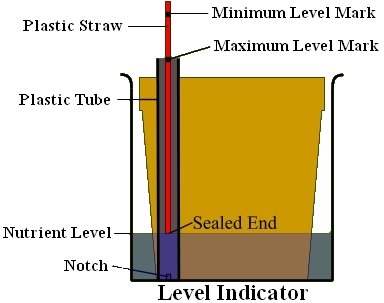When a plant converts to Hydroponics, it grows so called water roots, that are able to take nutrients and Oxygen from water. This may take 4-6 weeks, depending on the plant's age and condition.
- Rinse the hydroton until water runs clear.
- Soak the pellets for an hour in a bucket.
- Remove plant from pot, remove ALL soil from roots. You can soak the roots in room temperature water if necessary, or use a shower hose.
- Trim the roots. Rid your plant of dead or unhealthy roots. If root ball is big/rootbound, cut away all encircling roots, thick ones and those that are growing straight downward in the pot. It is fine to remove 1/3 of the root mass. The plant should fit back in the same sized pot it was originally in.
- Put a layer of clay balls up to 1/3 of the pot, then the plant and fill up surrounding space just like it were soil. Make sure you don't break fine roots and plant is steady.
- Add only plain water in the next 4 weeks. Plants can be sensitive until roots re-establish in the new environment. Keep the plant in a propagator or a clear plastic bag with air holes for higher humidity.
- When plants show new growth, gradually add fertilizer to the water. Start with 1/4 strength of what the label suggests.
Containers
Pot in pot method uses a plastic inner pot with holes at the bottom, and an outer cache-pot slightly larger than the internal one. The outer pot serves as reservoir to hold the nutriend solution. Water level shouldn't be higher than 1/4 of the inner pot, level has to be measured with a fully potted plant placed in the container. You may need a water level indicator or use a clear cache-pot. This is a popular method because allows you to 'hide' the plain plastic in a showy watertight container. Unglazed ceramic/terracotta pots can not hold water for longer periods, therefore not suitable for Hydroponics! They may also leave marks on furniture.
Pot in saucer method is basically the same as above, but water level indicator and cache-pot are not needed for the saucer serves as reservoir and water levels can be easily seen. Saucer should hold enough solution that will last for 7-10 days. You can group the plants in larger watertight trays to make checking solution levels and watering even easier.
Single pot method is not commonly used as checking nutrient solution levels is almost impossible without a level indicator. Also rinsing the media can be tricky. I only use this for Bromeliads, Phalaenopsis orchids and air plants that only need some moisture around their roots. Glass containers are suitable for this method but unwanted algae may appear by time.
Water level indicator
I myself don't use indicators, but they can be purchased in Hydroponics stores or made at home using plastic tubes, straws and some manual skills.
Maintenance
Nutrients has to be added with every watering. Always use a fertilizer suitable for hydro system and follow instructions on the label. Fill up saucer when level falls to the bottom of the inner pot. Some plants may not like dry periods so make sure their reservoir is topped up regularly. When first transplanted, plants' roots are above the water level and only moisture through the capillary action reaches them. By time plants grow their roots down below the water level. This should cause no trouble.
Make the nutrient solution prior to watering and let it sit for a while to reach room temperature. Tap-, bottled-, rain- or reverse osmosis (RO) water can be used. Note that some plants may be sensitive to fluoride or chlorine in tap water. Store unused solution in a sealable opaque container and out of reach of children.
Cleaning of pots and flushing aggregates to remove salt buildups are necessary. I do it once a month. Simply take your plants to the sink or shower, let water run through the inner pot and wash outer pot with a sponge. You can shower your plants with room temp water to wash off dust.
Washing/changing clay pellets can be done every year together with root pruning or potting up. You may want to do this when roots come out at the bottom of the container or a large number of aggregates seem to break down into smaller particles.






